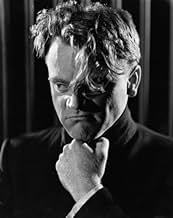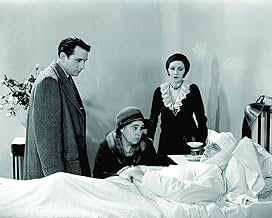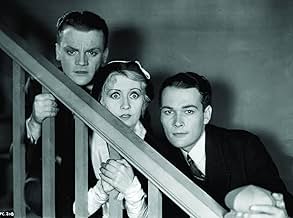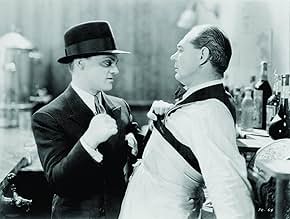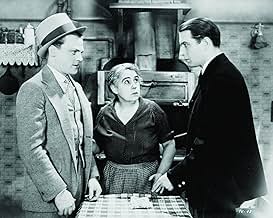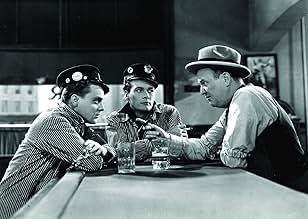Un joven matón va haciéndose un nombre en los bajos fondos de Chicago, incluso cuando la muerte accidental de un gángster amenaza con provocar una sangrienta guerra de bandas.Un joven matón va haciéndose un nombre en los bajos fondos de Chicago, incluso cuando la muerte accidental de un gángster amenaza con provocar una sangrienta guerra de bandas.Un joven matón va haciéndose un nombre en los bajos fondos de Chicago, incluso cuando la muerte accidental de un gángster amenaza con provocar una sangrienta guerra de bandas.
- Dirección
- Guionistas
- Elenco
- Nominado a 1 premio Óscar
- 1 premio ganado y 1 nominación en total
- Paddy Ryan
- (as Robert O'Connor)
- Goon
- (sin créditos)
- Dutch
- (sin créditos)
- Kitty
- (sin créditos)
- Tom as a Boy
- (sin créditos)
- Machine Gunner
- (sin créditos)
- Matt as a Boy
- (sin créditos)
- Miller
- (sin créditos)
- Molly Doyle
- (sin créditos)
- Nails' Girl
- (sin créditos)
- Dirección
- Guionistas
- Todo el elenco y el equipo
- Producción, taquilla y más en IMDbPro
Opiniones destacadas
Powerful portrait of the rise and fall of a nasty gangster extraordinarily performed by James Cagney
Classic gangster movie contains top-notch performances , unpretentious familiar drama, thrills , fast-paced , action , and a shocking final . Magnificent James Cagney in the title role as a snarling and ominous gangster . Edward Woods was originally hired for the lead role of Tom Powers and James Cagney was hired to play Matt Doyle, his friend . However, once director William A. Wellman got to know both of them and saw Cagney in rehearsals, he realized that Cagney would be far more effective in the star role than Woods, so he switched them . Very good support cast formed by known actresses who subsequently would have an important career as Jean Harlow , Joan Blondell and Mae Clarke including her infamous grapefruit scene that caused women's groups around America to protest the on-screen abuse of Mae Clarke . As several versions exist of the origin of the notorious grapefruit scene, but the most plausible is the one on which James Cagney and Mae Clarke agree: the scene , they explained, was actually staged as a practical joke at the expense of the film crew, just to see their stunned reactions ; there was never any intention of ever using the shot in the completed film , filmmaker Wellman, however, eventually decided to keep the shot, and use it in the film's final release print . Atmospheric and appropriate musical score , Scorsese says that Wellman's use of music in the film influenced his own first gangster picture, Mean Streets (1973) .
Wellman was an expert in all kind of genres as Gangster, drama , Film Noir , Western and adept at comedy as he was at macho material , helming the original ¨ A star is born ¨(1937) (for which he won his only Oscar, for best original story) and the biting satire ¨Nothing sacred¨ (1937) , both of which starred Fredric March for producer David O. Selznick . Both movies were dissections of the fame game, as was his satire ¨Roxie Hart¨ (1942), which reportedly was one of Stanley Kubrick's favorite films. During World War Two Wellman continued to make outstanding films, including ¨Ox-Bow incident¨ (1943) and ¨Story of G.I.Joe¨(1945), and after the war he turned out another war classic, ¨Battleground¨ (1949). In the 1950s Wellman's best later films starred John Wayne, including the influential aviation picture ¨The hight and the mighty¨ (1954), for which he achieved his third and last best director Oscar nomination. His final film hearkened back to his World War One service, ¨The Lafayette squadron¨ (1958), which featured the unit in which Wellman had flown . He retired as a director after making the film, reportedly enraged at Warner Bros.' post-production tampering with a movie that meant so much to him .
¨The Public enemy¨ , rating : Well worth watching , above average ; the picture will appeal to classic cinema buffs and James Cagney fans . It ranked #8 on the American Film Institute's list of the 10 greatest films in the genre "Gangster" .
Of course this film about a young man's rise to prominence in the bootleg liquor business during Prohibition made James Cagney a star. Interestingly enough Edward Woods was originally supposed to be Tom Powers and Cagney was cast as best friend Matt Doyle. After some footage had been shot, Director William Wellman scrapped it and had Cagney and Woods exchange roles. Stars get born in many and strange ways.
Some critics have complained about Beryl Mercer's part as Cagney's mother, saying she's overacts the ditziness. I disagree with that completely. In the prologue section with Cagney and Woods as juveniles, there is a two parent household. The boys have a stern Irish father and a mom who'd spoil them if she could. The older kid who is later played by Donald Cook has more the benefit of the two family home and both influences. That and the fact that World War I leaves him partially disabled prevents him from thinking about the gangster trade. Cagney misses the war and is spoiled by mom.
I knew a woman like Beryl, in her own world with a stream of nonsensical chatter to keep out the reality of things. Her portrayal for me rings true.
Oddly enough in The Roaring Twenties Cagney is a veteran who enters the rackets because he can't get a legitimate job and its easy money.
Both The Public Enemy and Little Caesar are short films, edited down to the essentials so the viewer ain't bored for a minute. Warner Brothers sure knew how to do those gangster flicks.
James Cagney wasn't originally supposed to be the lead in The Public Enemy. He was cast as the sidekick, but director William Wellman soon realised he was the better man for the top job. And it's not surprising that he stood out, despite a lack of experience. It's not deep acting ability (although he would demonstrate that later in his career), it's presence; a raw, captivating charisma. He brings a compelling life to the part of Tom Powers, much as Edward G. Robinson did in Little Caesar six months or so earlier. But whereas Robinson was more of an Al Capone figure, Cagney is more the lean, young street brawler than the cigar-chomping kingpin. The gangster genre had found the perfect actor for another of its archetypes.
Scripted by Kubec Glasmon, John Bright and Harvey Thew, The Public Enemy is at the forefront of the then-popular mob movies, mainly thanks its brutal presentation of gangland. There were plenty of movies in which hoods gunned each other down with far more abandon, but in The Public Enemy the violence is more shocking through its context. The picture begins by showing the protagonists as kids. This was ostensibly to demonstrate the origins of criminality, but by giving us that glimpse of childhood, the later fates of the characters seem all the more grim and tragic. Cagney's doting mother remains a presence throughout the movie to keep this angle going.
William Wellman was ideal for such a project, since it's violence that brings out his inventive side. A little bit of action goes a long way in a Wellman movie. When Donald Cook punches Cagney, Cagney falls and crushes a chair. At other times the director has a bit of nasty business take place off screen, something which only the new sound technology would fully allow, cunningly drawing attention to the wider context. Involving the audience is another trick. For key moments he'll change the angle so that Cagney is almost staring into the lens, bearing down upon us.
And with those piercing eyes, commanding tone and short, sharp movements, Cagney is ideal for such an aggressive visual style. And yet these very strengths would present him with one drawback. As stars began to emerge that seemed so intrinsic to the tones and tropes of one genre, typecasting set in hard. The Public Enemy is an awesome debut for Cagney, but it also formed a constricting mould this intelligent and versatile actor would struggle to break.
While we may never literally create a time machine, these old movies give you the miracle of observation at least of what life was once like. Sadly many of the old films have been destroyed through neglect, so the pickings are very slim. Public Enemy is one of the best old movies available. For only the sheer pleasure of seeing what all the fuss was about in Cagney and Harlow, it's worth a viewing. Director Wellman creates some extremely lasting images you won't want to miss, and it almost makes me think of the original Frankenstein for that reason. The final sequence especially is a dramatic example of lasting imagery in film, quite an unforgettable experience. If you like Godfather, Scarface, Goodfellas, and who doesn't, you owe it yourself to watch what may be the patriarch of the entire genre. Interestingly, while the film has a campy disclaimer demonizing the subject matter and mandating public action in order to address the evils of organized crime, it's rather obvious that the producers new exactly what they were really doing by making a film like this. Brutal as some of the action is, Cagney's charisma glorifies the gangster as much as Coppola, Scorsese and all the rest glorify modern organized crime. See it for yourself!!!
In my opinion a major credit of the film is that it systematically avoids cliché. Neither Tom nor Matt are outcomes of poverty and social injustice. They come from simple but honest, decent and loving families. But they are both bad (that's the word) and they use the freedom and opportunities of their democratic country to make evil.
In "The Public Enemy" we find probably the first instances of the beautiful stylish cinematography and clever camera-work that will become the trade-mark of later gangster and noir movies. Some scenes are unforgettable, like the final one, or that under the rain, or that of Cagney abusing the girl. The brief scene of the killing of the horse is pure cinematic genius.
In the film there are also some naiveness and clumsiness, though. The way Tom undergoes the personality of his good brother is far-fetched. It is not clear why a gangster in a hospital, wounded in a gun-fight, is not under strict police control. The behavior of Tom's boss in the ending is illogical. Moreover, the part where Tom and Matt are kids is too long (we audience are all eager to see Cagney!), and action is a bit scarce for a gangster movie.
"The Public Enemy" was Cagney's breakout film, and really he makes a powerful and accurate job. Actually, a strong acting is provided by the whole cast. The director William A. Wellmann handles the movie with sound talent.
"The Public Enemy" is a beautiful and historically important movie. I recommend it to any cinema-lover
¿Sabías que…?
- TriviaOn the set one day, James Cagney stared at Jean Harlow's nipples and asked, likely in perfect innocence and good humor, "How do you keep those things up?" "I ice them," Harlow said, before trotting off to her dressing room to do just that.
- ErroresIn 1915, when Tom meets Putty Nose at the pool hall, the sign on the wall says "Don't spit of the floor. Remember the Jamestown Flood". It was the city of Johnstown, not Jamestown than had the historic flood.
- Citas
Tom Powers: [Tom shuffles to the breakfast table in his pajamas. He's just finished a demanding call with Nails Nathan] Ain't you got a drink in the house?
Kitty: Well, not before breakfast, dear.
Tom Powers: [immediately annoyed] ... I didn't ask you for any lip. I asked you if you had a drink.
Kitty: [sheepishly] I know Tom, but I, I wish that...
Tom Powers: ... there you go with that wishin' stuff again. I wish you was a wishing well. So that I could tie a bucket to ya and sink ya.
Kitty: Well, maybe you've found someone you like better.
[Angered, Tom grimaces and shoves a piece of grapefruit in her face as he leaves the table.]
- Créditos curiososIt is the ambition of the authors of "The Public Enemy" to honestly depict the environment that exists today in a certain strata of American life, rather than glorify the hoodlum or the criminal. While the story of "The Public Enemy" is essentially a true story, all names and characters appearing herein, are purely fictional.
- Versiones alternativasFor a 1941 re-release, three scenes in "The Public Enemy" were censored to comply with the Production Code. These censored segments (including an extended edit of the scene involving the gay tailor) were restored for the 2005 DVD release.
- ConexionesEdited into Three on a Match (1932)
- Bandas sonorasI'm Forever Blowing Bubbles
(1919) (uncredited)
Music by James Kendis, James Brockman and Nat Vincent
Played at various times throughout the film
Selecciones populares
Detalles
- Fecha de lanzamiento
- País de origen
- Sitio oficial
- Idioma
- También se conoce como
- The Public Enemy
- Locaciones de filmación
- Wilshire Blvd, Los Ángeles, California, Estados Unidos(convertible ride with Jean Harlow)
- Productora
- Ver más créditos de la compañía en IMDbPro
Taquilla
- Total en EE. UU. y Canadá
- USD 1,011,520
- Total a nivel mundial
- USD 1,214,260
- Tiempo de ejecución1 hora 23 minutos
- Color
- Relación de aspecto
- 1.37 : 1


